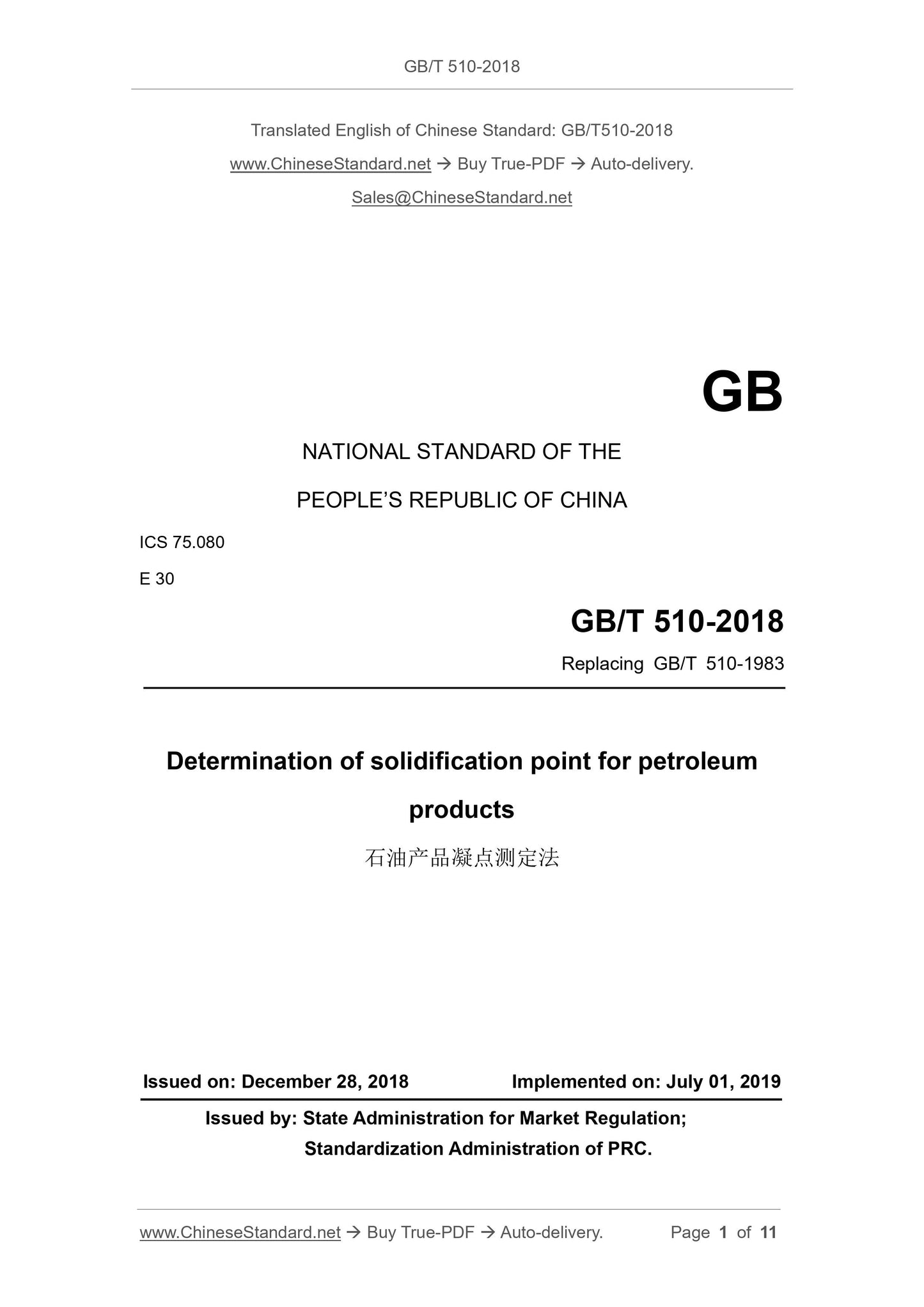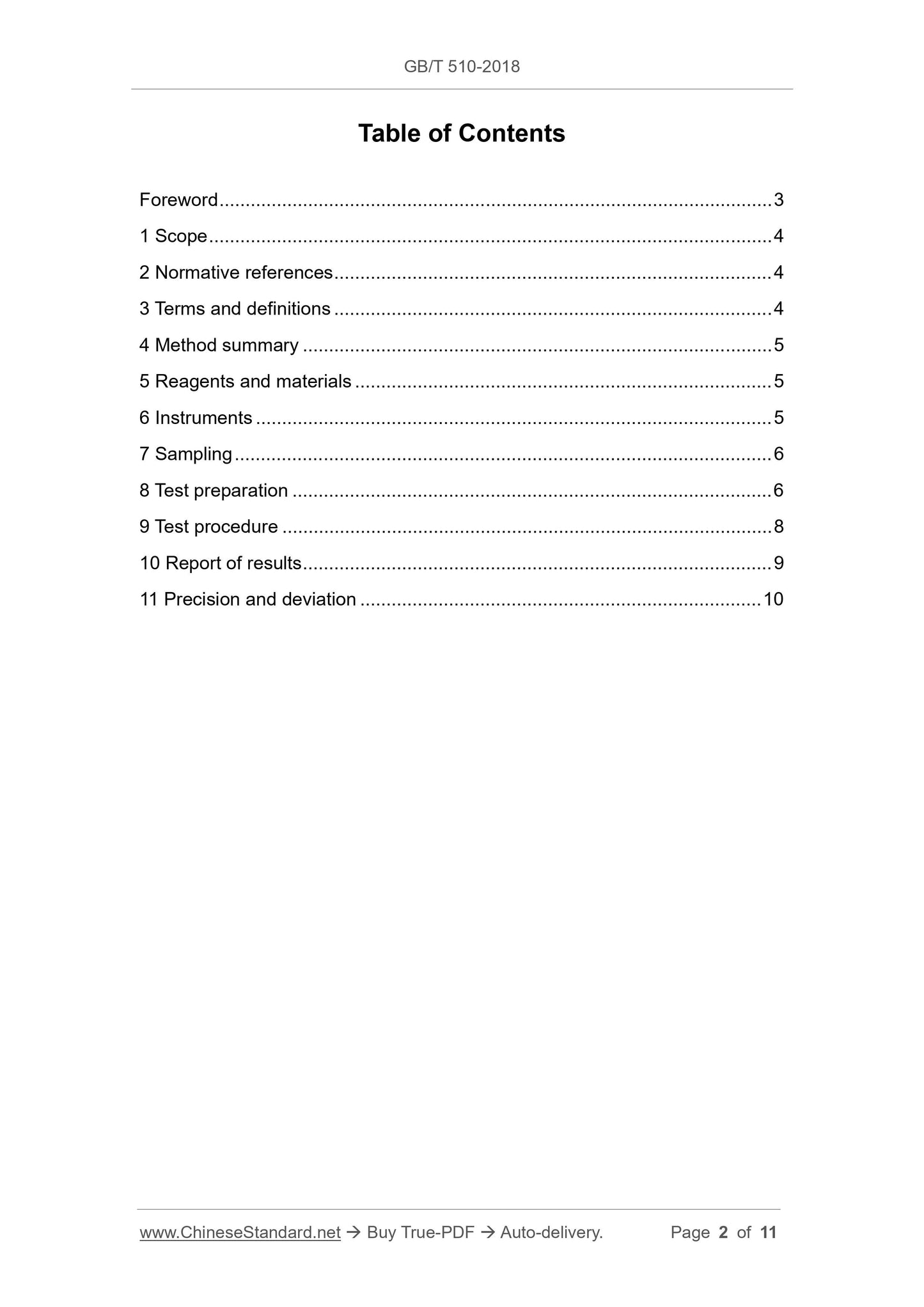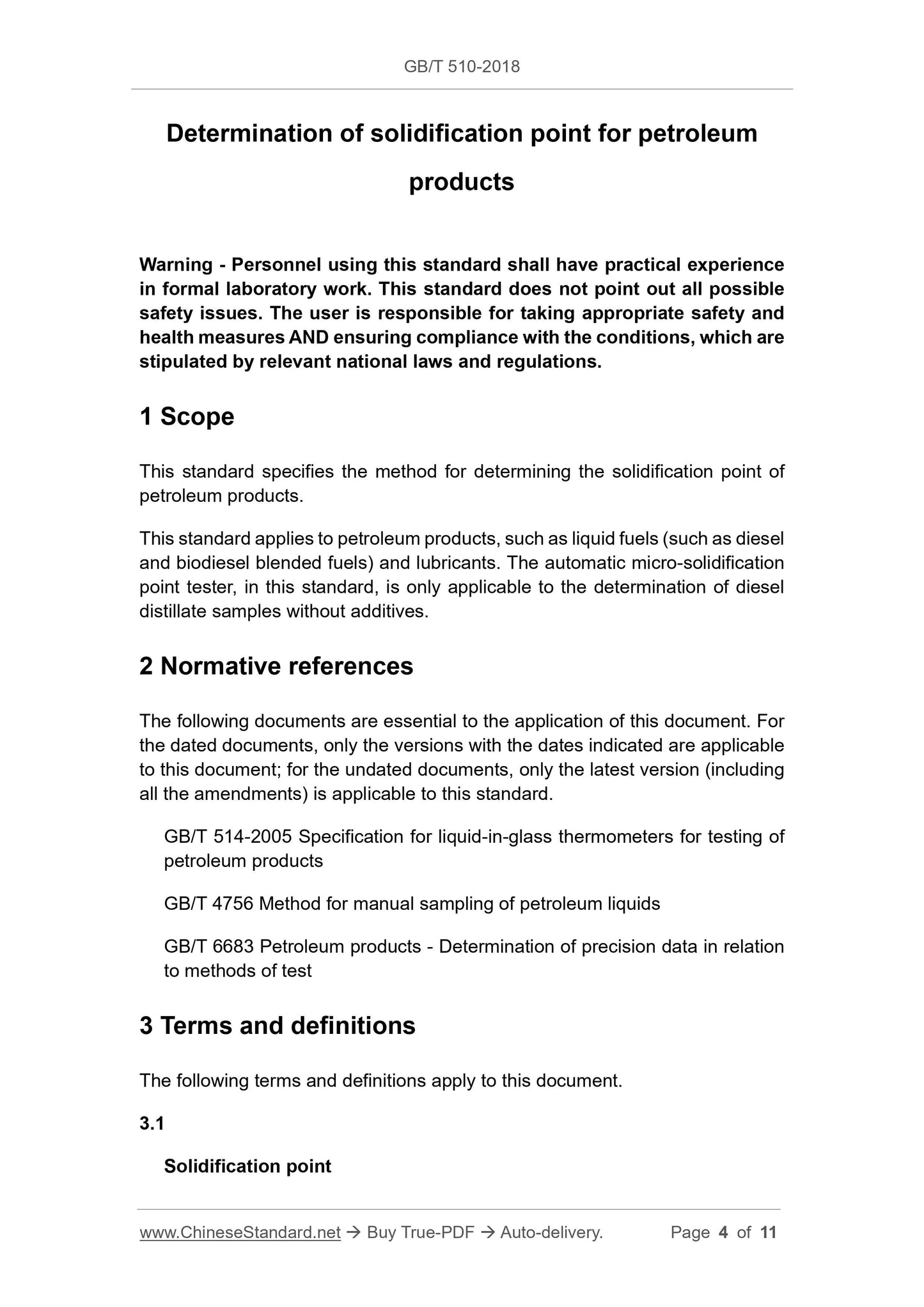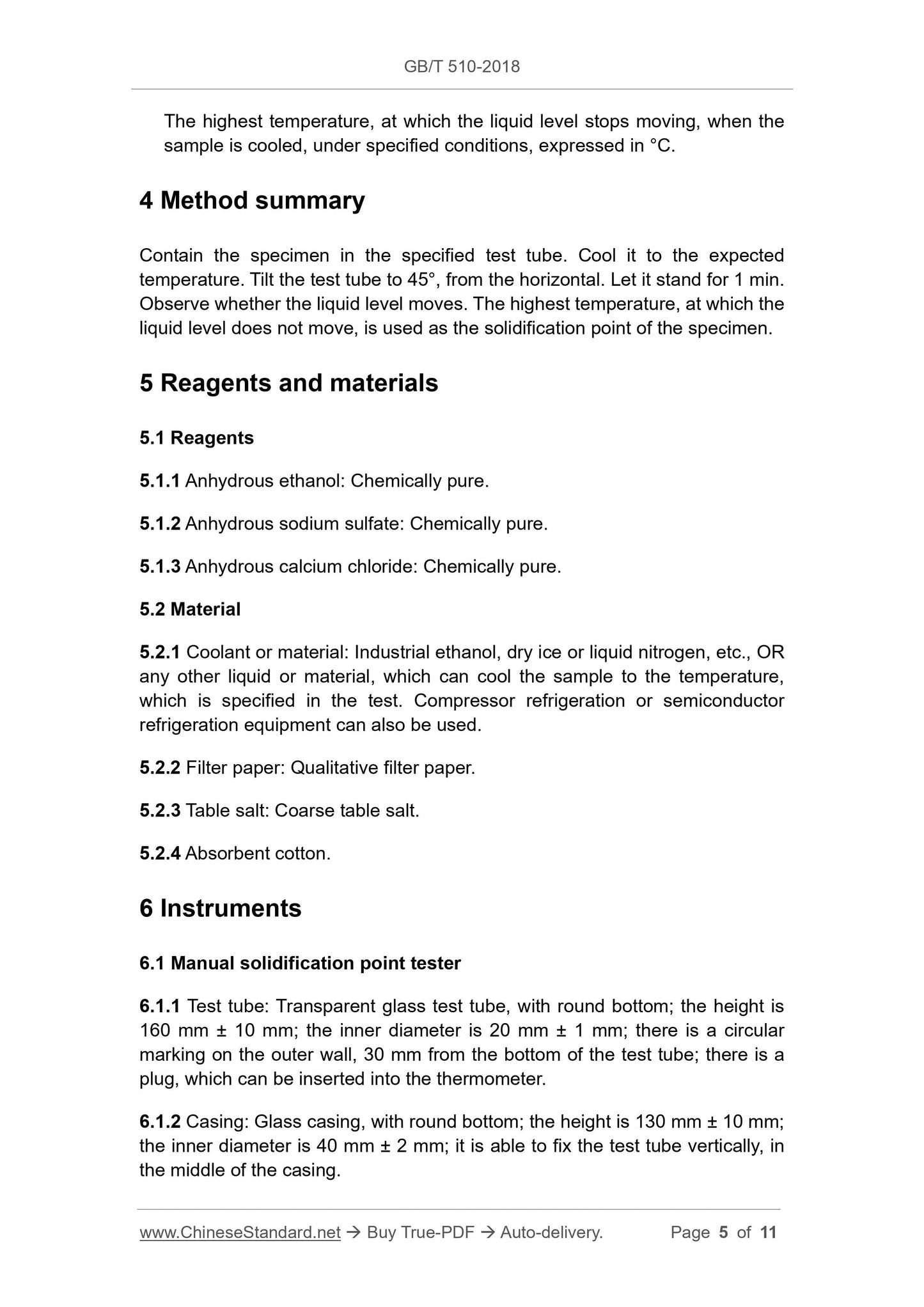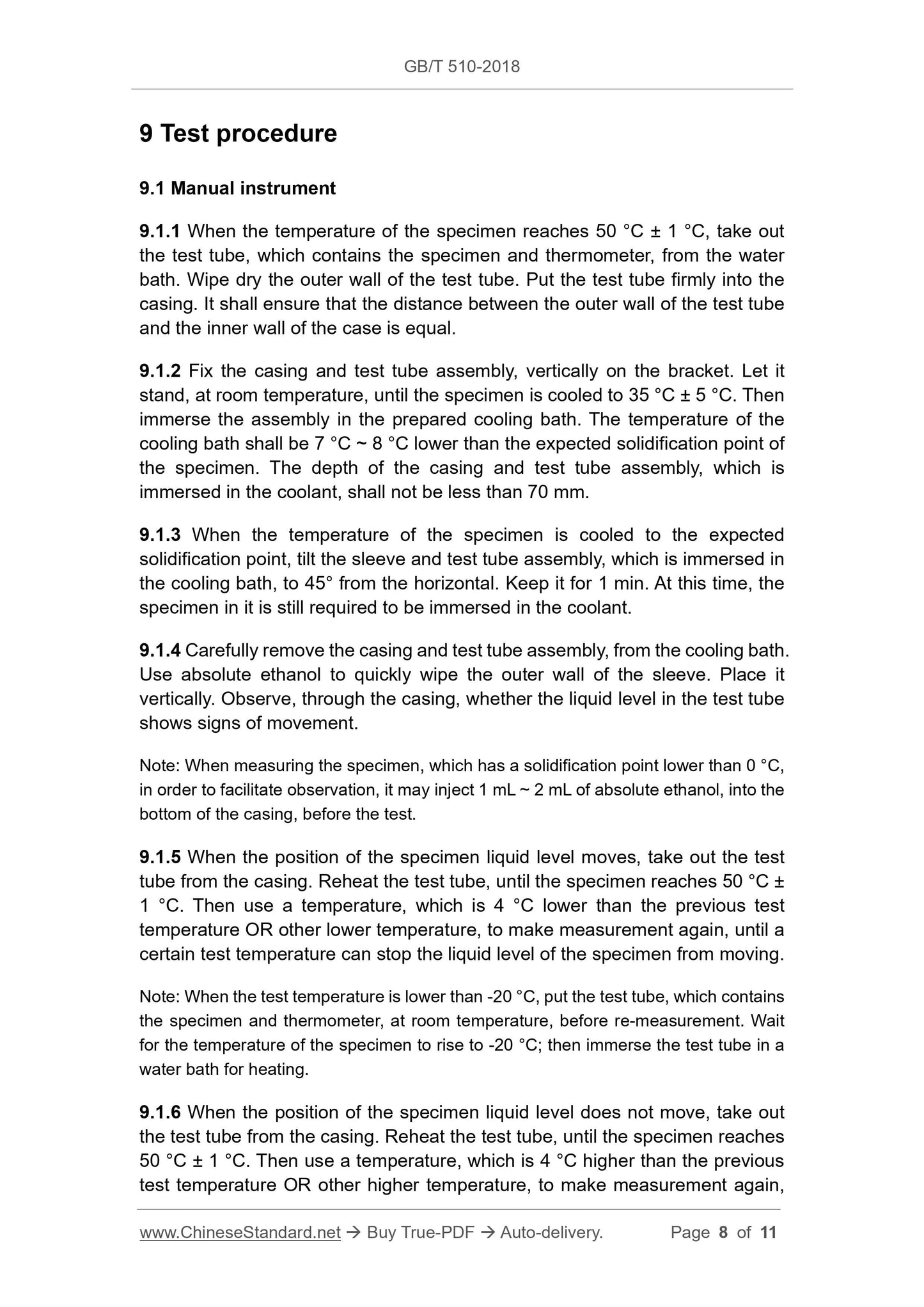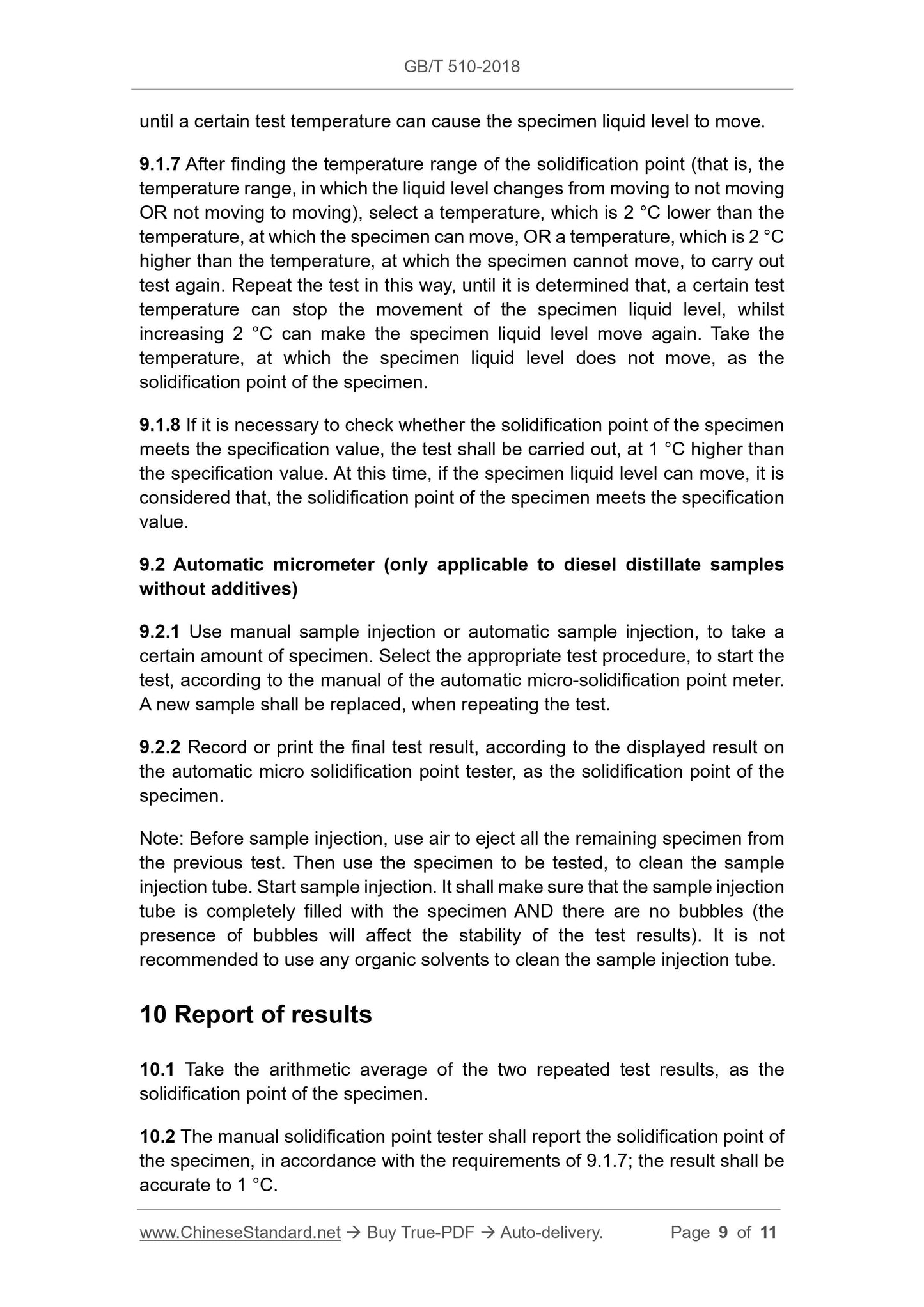1
/
of
6
www.ChineseStandard.us -- Field Test Asia Pte. Ltd.
GB/T 510-2018 English PDF (GB/T510-2018)
GB/T 510-2018 English PDF (GB/T510-2018)
Regular price
$170.00
Regular price
Sale price
$170.00
Unit price
/
per
Shipping calculated at checkout.
Couldn't load pickup availability
GB/T 510-2018: Determination of solidification point for petroleum products
Delivery: 9 seconds. Download (and Email) true-PDF + Invoice.Get Quotation: Click GB/T 510-2018 (Self-service in 1-minute)
Newer / historical versions: GB/T 510-2018
Preview True-PDF
Scope
This standard specifies the method for determining the solidification point ofpetroleum products.
This standard applies to petroleum products, such as liquid fuels (such as diesel
and biodiesel blended fuels) and lubricants. The automatic micro-solidification
point tester, in this standard, is only applicable to the determination of diesel
distillate samples without additives.
Basic Data
| Standard ID | GB/T 510-2018 (GB/T510-2018) |
| Description (Translated English) | Determination of solidification point for petroleum products |
| Sector / Industry | National Standard (Recommended) |
| Classification of Chinese Standard | E30 |
| Classification of International Standard | 75.080 |
| Word Count Estimation | 10,155 |
| Date of Issue | 2018-12-28 |
| Date of Implementation | 2019-07-01 |
| Older Standard (superseded by this standard) | GB/T 510-1983 |
| Issuing agency(ies) | State Administration for Market Regulation, China National Standardization Administration |
Share
